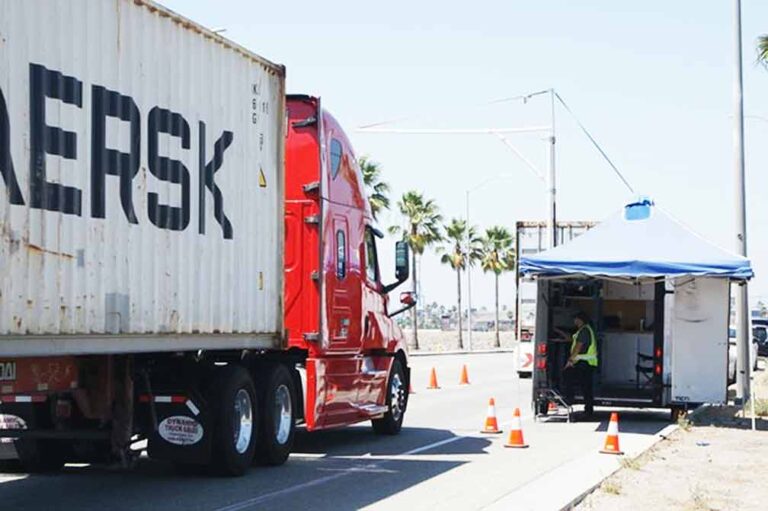SACRAMENTO — The California Air Resources Board (CARB) recently previewed the Heavy-Duty Inspection and Maintenance Program (HD I/M), which is due to begin phasing in on Jan. 1, 2023, at an enforcement truck event held at the Port of Los Angeles.
CARB used the event, where more than 1,200 trucks were screened, to help make owners and operators aware of the new “smog check” requirements for heavy-duty vehicles and the phase-in timeline.
“The program is the first in the nation of its kind and will ensure that emissions control systems on heavy-duty vehicles operate effectively for the life of the vehicle, improving air quality and protecting public health,” according to a news release.
The HD I/M program will apply to all heavy-duty trucks, buses, agricultural equipment and personal motorhomes with a Gross Vehicle Weight Rating of more than 14,000 pounds travelling in the state regardless of whether they are registered in California.
“The Heavy-Duty Inspection and Maintenance Program will ensure that the emissions control equipment in heavy-duty trucks does its job capturing and removing harmful emissions for the life of the vehicle,” CARB Chair Liane Randolph said. “If we discover it’s not working properly, it will be repaired quickly. This will save owners and operators in fuel costs and deliver significant improvements in air quality and public health especially in communities adjacent to highways, ports and warehouses that suffer from persistent air pollution as a result of heavy traffic.”
While the heavy-duty vehicles under this program comprise only 3% of all vehicles on California roads, they are responsible for more than half of all harmful smog-causing pollution and fine particulate matter from mobile sources in the state, according to state officials.
“The new program is expected to deliver $75 billion in health benefits, prevent 7,500 air-quality related deaths and 6,000 hospitalizations and emergency room visits from 2023 to 2050,” the news release stated. “These benefits are 18 times the estimated cost of the program at $4 billion.”
In the first phase of the program, beginning in January 2023, the Portable Emissions Acquisition System (PEAQS) – a roadside monitoring system that measures truck emissions – will be deployed in various areas to screen for potential high-emitting vehicles operating on California roads. The detection/monitoring system was unveiled at the enforcement event at the Port of Los Angeles.
Vehicles flagged by the monitoring devices will be required to undergo an additional emissions test to verify their emissions-control equipment is functioning properly and repair any malfunctioning emission control equipment, if necessary.
In mid-2023, phase two of the HD I/M program requires all heavy-duty trucks to register with CARB and obtain a certificate of compliance to operate in the state.
In 2024, in the last phase of the program, heavy-duty truck registration in California will require proof of emissions compliance with the HD I/M Program. Emissions inspections will need to be performed twice a year for vehicles with onboard diagnostic systems, increasing to four times per year testing in 2027.
“Emissions inspections are designed to minimize downtime and the inconvenience to owners/ operators,” according to the news release. “Unlike passenger car smog checks, heavy-duty vehicle owners will be able to complete the required test and deliver emissions systems inspection information remotely without having to travel to designated testing locations. The test can be conducted anywhere using the truck’s OBD system or stand-alone scan tool provided it’s performed by a CARB-credentialed tester using a CARB-certified readout device.”
It is projected that 75-80% of all heavy-duty trucks will have OBD equipment that can utilize telematics technology when the program begins.
Older heavy-duty vehicles without an OBD system will continue the current opacity testing requirements with an added visual testing component, twice each year.
The Trucker News Staff produces engaging content for not only TheTrucker.com, but also The Trucker Newspaper, which has been serving the trucking industry for more than 30 years. With a focus on drivers, the Trucker News Staff aims to provide relevant, objective content pertaining to the trucking segment of the transportation industry. The Trucker News Staff is based in Little Rock, Arkansas.








